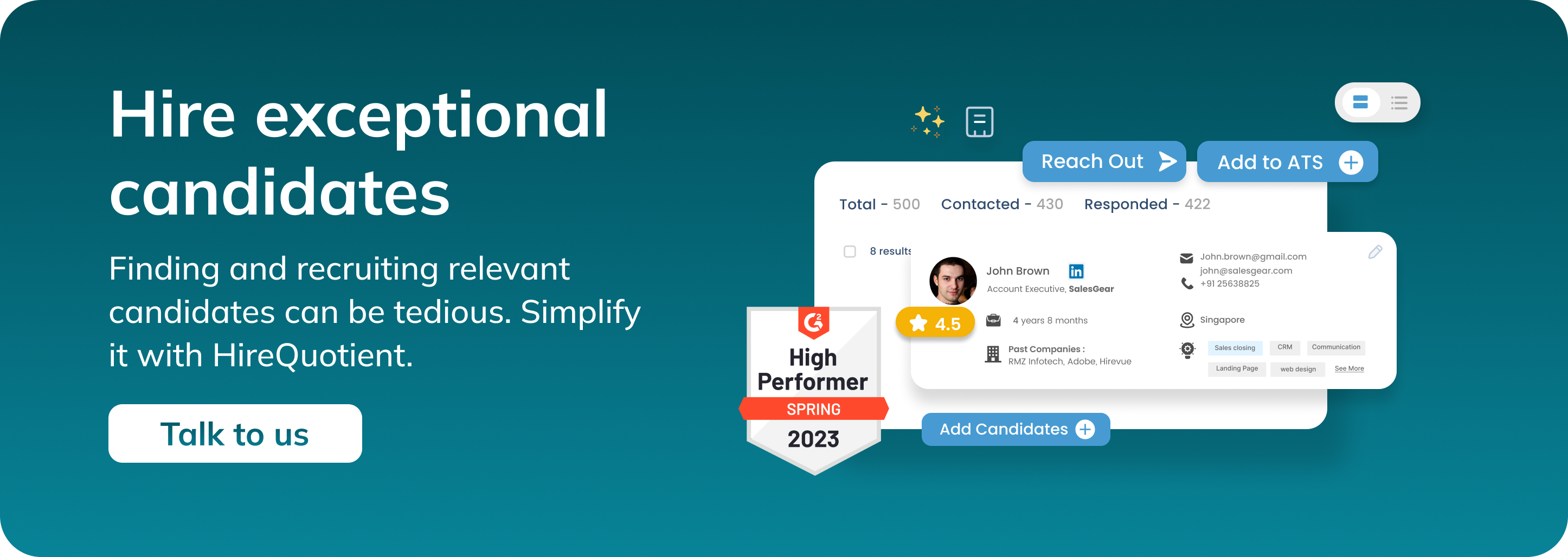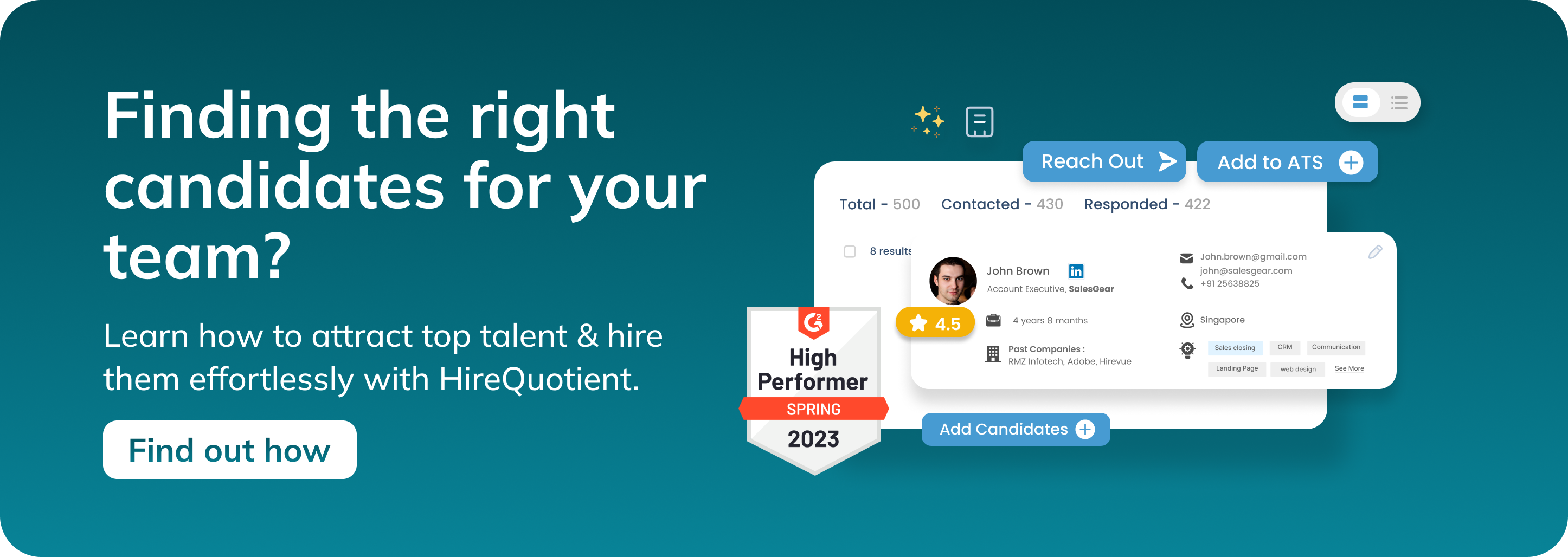Recruitment Automation Software: Top Ten Solutions You're Missing Out On
Published on June 6th, 2023
Recruitment automation software has revolutionized the hiring process, empowering recruiters and hirers to streamline and optimize candidate sourcing and management. These powerful tools leverage artificial intelligence to identify qualified candidates, verify profiles, and simplify the entire recruitment journey.
In this article, we're going to discuss:
- The Evolution of Recruitment Automation Software
- Top Ten Recruitment Automation Software
- Benefits of Implementing Recruitment Automation Software
- How to Maximize ROI with Recruitment Automation Tools
- Integration Challenges and Solutions with Recruitment Automation Software
- Future Trends in Recruitment Automation
The Evolution of Recruitment Automation Software
The transition from traditional recruitment practices to the utilization of recruitment automation software marks a significant evolution in the HR industry. This transformation has redefined the hiring landscape, making it imperative for organizations to adapt to remain competitive and efficient.
The Pre-Automation Era
Before the advent of recruitment automation, recruiters relied heavily on manual processes for every stage of hiring. From sifting through piles of resumes to managing candidate communications and scheduling interviews, the recruitment process was not only time-consuming but also prone to human error. This method limited recruiters' ability to focus on strategic aspects of their roles, such as building relationships with candidates and improving the overall candidate experience.
Introduction of Automation in Recruitment
The introduction of recruitment automation software revolutionized the hiring process by introducing efficiency, accuracy, and scalability. Initially, automation was focused on simplifying administrative tasks, such as resume parsing and applicant tracking. However, as technology advanced, so did the capabilities of these platforms.
The Role of AI and Machine Learning
The integration of Artificial Intelligence (AI) and Machine Learning (ML) into recruitment software was a game-changer. These technologies enabled predictive analytics, intelligent candidate matching, and personalized candidate engagement at scale. AI-driven recruitment automation tools could now identify passive candidates, predict job fit based on historical data, and even automate candidate outreach, fundamentally changing how recruiters connect with talent.
Enhancing Candidate Experience
Recruitment automation software has also played a pivotal role in enhancing the candidate experience. Automated communication tools ensure timely and personalized interaction with candidates throughout the recruitment process. From automated emails acknowledging application receipt to chatbots answering candidate queries in real-time, these technologies have made the recruitment process more engaging and transparent for candidates.
The Impact on Strategic Recruitment
The evolution of recruitment automation software has shifted the recruiter's role from administrative task managers to strategic talent advisors. With the heavy lifting of the recruitment automation tools, HR professionals can now focus on strategic aspects such as employer branding, candidate experience, and workforce planning.
This shift has not only improved the efficiency of the recruitment process but also its effectiveness, enabling organizations to attract and retain top talent more effectively.
Looking Ahead
As we look to the future, recruitment automation software is set to become even more sophisticated. With advancements in AI and ML, along with the integration of new technologies such as natural language processing and predictive analytics, recruitment automation will continue to evolve.
These advancements will further streamline the hiring process, enhance candidate engagement, and provide strategic insights that empower organizations to build stronger, more dynamic teams.
The evolution of recruitment automation software underscores the importance of embracing technology in the hiring process. By understanding where we've come from and where we're headed, organizations can better appreciate the value of these tools and integrate them into their recruitment strategies to achieve greater efficiency, effectiveness, and competitive advantage in the talent market.
Top Ten Recruitment Automation Software
HireQuotient

HireQuotient is a company dedicated to supporting the HR community by providing AI-based tools for different hiring processes. EasySource, its candidate sourcing tool uses AI to source candidates, discovers, vets, and reaches out by sending hyperpersonalized messages based on your requirements as well as the candidate's profile (not Keywords, like outdated ATSs). They also have skill assessment as well as asynchronous video assessment software as well.
LinkedIn Recruiter

LinkedIn Recruiter offers a comprehensive set of features to source and manage talent within the LinkedIn network. With AI-powered sourcing and access to tools for recruiting on LinkedIn, this software is a must-have for HR professionals and recruiters in various industries.
Zoho Recruit
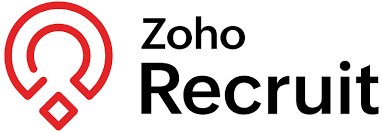
Zoho Recruit is an applicant tracking system that addresses the challenges faced by recruiters and staffing agencies. It provides end-to-end solutions, aiding in candidate sourcing, engagement, and management, making it a valuable asset for recruiters of all levels.
Ceipal ATS

Ceipal ATS is an AI-driven talent acquisition platform that centralizes data and offers comprehensive visibility across all channels. With its ability to organize data and streamline the hiring process, this software empowers recruiters to make informed decisions.
Sense
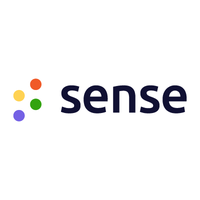
Sense offers an all-in-one communication and engagement solution for modern recruiting companies. Through automated communication technology, Sense accelerates growth and enhances candidate engagement, making it a top choice for recruiters and hiring managers.
Indeed
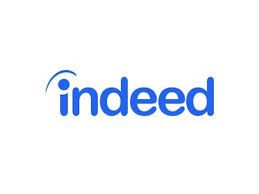
Indeed is the world's leading job site, offering a powerful matching and hiring platform. With a wide range of tools and features, Indeed helps organizations find and connect with top talent efficiently and effectively.
SeekOut

SeekOut is a talent optimization platform that enables organizations to hire, grow, and retain great talent. By leveraging data and advanced analytics, SeekOut provides valuable insights to recruiters and hirers, assisting them in making smarter hiring decisions.
Hireology

Hireology is an all-in-one recruiting, hiring, and employee management platform. Designed for decentralized businesses, Hireology equips HR and business leaders with the tools they need to build high-performing teams.
Hired

Hired is a platform dedicated to filling tech and sales roles efficiently. With unbiased insights, DEI tools, and skill assessments, Hired collaborates with thousands of companies to match them with top talent.
Phenom Intelligent Talent Experience Platform

Phenom helps employers create exceptional talent experiences through AI-powered solutions. With features that support hiring, development, and career advancement, Phenom aids organizations in attracting and retaining the right talent.
Grayscale

Grayscale is a frontline engagement platform that seamlessly integrates with ATS and HCM systems. By automating engagement and simplifying the sourcing process, Grayscale enables recruiters to focus on building meaningful connections with candidates.
Benefits of Implementing Recruitment Automation Software
In the rapidly evolving landscape of talent acquisition, the adoption of recruitment automation software has become a cornerstone for achieving operational excellence and strategic advantage.
Implementing these sophisticated tools offers a multitude of benefits that not only streamline recruitment workflows but also elevate the overall hiring process. Before diving into how to pick the right recruitment automation platforms, it's essential to understand the specific advantages they offer.
Reduced Time-to-Hire
One of the most significant benefits of recruitment automation software is the substantial reduction in time-to-hire. Automating repetitive tasks such as resume screening, candidate sourcing, and initial communications can save countless hours.
This efficiency allows recruiters to focus on more high-value activities, such as engaging with qualified candidates and refining the hiring strategy. By accelerating these processes, companies can fill vacancies faster, reducing the cost of vacant positions and increasing organizational agility.
Improved Candidate Quality
Recruitment automation software enhances the quality of hire by leveraging advanced algorithms and AI to match candidates more accurately with job requirements. These platforms can sift through extensive databases to identify candidates who not only meet the specified criteria but also have a higher likelihood of success in the role. By automating the initial screening process, recruiters can ensure a more focused and high-quality candidate pool, leading to better hiring outcomes.
Enhanced Candidate Experience
In today's competitive job market, the candidate's experience is paramount. Recruitment automation software contributes significantly to a positive experience by ensuring timely and personalized communication throughout the recruitment process.
Automated emails, chatbots, and SMS services keep candidates informed and engaged, reducing the chances of losing top talent to competing offers. This level of engagement reflects positively on the employer brand, making the company more attractive to prospective employees.
Streamlined Recruitment Workflows
Implementing recruitment automation software leads to more organized and efficient recruitment workflows. By centralizing candidate information and automating workflow triggers, these platforms ensure that no candidate falls through the cracks.
Recruiters can easily track the status of each applicant, schedule interviews, and manage tasks, all from a single platform. This level of organization not only improves the efficiency of the recruitment process but also enhances collaboration among hiring teams.
Data-Driven Decision Making
The ability to make informed decisions based on data is another critical advantage of recruitment automation software. These platforms offer comprehensive analytics and reporting tools that provide insights into the effectiveness of recruitment strategies.
From tracking source effectiveness to analyzing time-to-hire and cost-per-hire, recruiters can leverage data to optimize their processes continuously. This data-driven approach leads to more strategic hiring decisions and better alignment with organizational goals.
Scalability and Flexibility
As organizations grow, their recruitment needs evolve. Recruitment automation software is designed to scale, accommodating an increasing volume of applicants and more complex hiring processes.
Whether expanding into new markets or adjusting to seasonal hiring peaks, these platforms can adjust to meet changing demands. Furthermore, many solutions offer customization options, allowing companies to tailor the software to their specific needs and workflows.
How to Maximize ROI with Recruitment Automation Software
Implementing recruitment automation software is a significant investment for any organization, aimed at enhancing the efficiency and effectiveness of the hiring process. However, to truly realize the full potential of this investment, it's crucial to adopt strategies that maximize the return on investment (ROI).
This segment delves into practical steps and best practices for ensuring your recruitment automation software not only streamlines your hiring process but also delivers tangible value to your organization.
Continuous Training and Education
One of the foundational steps to maximizing ROI is investing in continuous training and education for your HR team and recruiters. Recruitment automation software is continually evolving, with new features and functionalities being added to improve its effectiveness. Regular training sessions ensure that your team is up-to-date with the software's capabilities and can leverage them to the fullest.
This includes understanding how to use AI-driven tools for unbiased hiring, optimizing job postings for better reach, and utilizing analytics for strategic decisions. An educated team is an empowered team, capable of pushing the boundaries of what your recruitment automation software can achieve.
Leveraging Data for Strategic Decision-Making
At the heart of recruitment automation software is a treasure trove of data that, when used correctly, can drive strategic hiring decisions. To maximize ROI, it's imperative to adopt a data-driven approach to recruitment. This involves analyzing performance metrics such as time-to-hire, cost-per-hire, and quality of hire to identify areas of improvement.
By understanding which sources bring in the most qualified candidates or which stages in the hiring process are bottlenecks, organizations can make informed adjustments. Furthermore, predictive analytics can forecast future hiring needs, allowing for proactive talent acquisition strategies.
Integrating with Existing HR Systems
The value of recruitment automation software multiplies when it's seamlessly integrated with existing HR systems such as HRIS (Human Resource Information System) and ATS (Applicant Tracking System). Integration ensures data flows smoothly across systems, providing a unified view of the talent acquisition process.
This holistic perspective is crucial for identifying efficiencies, understanding the impact of hiring on overall business objectives, and ensuring a consistent candidate experience. Moreover, integration minimizes manual data entry and the risk of errors, further enhancing the ROI of your recruitment automation solution.
Focusing on the Candidate Experience
Maximizing ROI also involves focusing on the candidate's experience. Recruitment automation software offers numerous tools to engage candidates more effectively, from automated communications to AI-driven chatbots. A positive candidate experience not only increases the likelihood of top talent accepting your offer but also boosts your employer's brand in the competitive job market. By leveraging automation to create a more engaging and responsive recruitment process, organizations can attract higher-quality candidates, reducing the cost and time associated with filling vacancies.
Continuous Improvement through Analytics
Finally, continuous improvement is key to maximizing ROI with recruitment automation software. Most platforms come equipped with analytics and reporting tools that provide insights into the effectiveness of your recruitment efforts.
Regularly reviewing these metrics allows organizations to identify trends, measure the success of changes, and continuously refine their recruitment strategies. This iterative process of analysis, adjustment, and measurement ensures that the recruitment process is always aligned with organizational goals and is operating at peak efficiency.
How to Pick the Right Recruitment Automation Platforms
Recruitment automation platforms have emerged as essential tools for modern recruiters and hirers, revolutionizing the hiring process by streamlining and optimizing candidate sourcing, engagement, and management.
With a plethora of options available in the market, choosing the right recruitment automation platform can be a daunting task.
So, here we will guide you on how to select the perfect recruitment automation platform that suits your specific needs and maximizes your hiring success.
Define Your Requirements: Before diving into the selection process, it's crucial to assess your organization's unique requirements. Consider factors such as the size of your company, the volume of hires, specific features needed (such as AI sourcing, candidate engagement, or analytics), integration capabilities, and budget. By defining your requirements, you can narrow down your options and focus on platforms that align with your needs.
Evaluate Key Features: When evaluating recruitment automation platforms, pay close attention to the key features they offer. Look for platforms that streamline the recruiting process, provide automated AI sourcing to identify passive qualified talent, and enable you to build and maintain talent pools for current and future roles. Consider features like candidate engagement tools, integration with other HR software, analytics and reporting capabilities, and ease of use.
Scalability and Customization: Ensure that the recruitment automation platform you choose is scalable and can grow with your organization. Look for platforms that can handle increased hiring demands, accommodate additional users, and adapt to changing business needs. Additionally, consider the level of customization the platform offers, allowing you to tailor it to your organization's unique workflows and branding.
Integration Capabilities: Efficient integration with existing systems is vital for seamless operations. Assess the platform's integration capabilities with other software you currently use, such as applicant tracking systems (ATS), customer relationship management (CRM) software, or HR management systems. A well-integrated recruitment automation platform will streamline data flow, eliminate manual data entry, and provide a holistic view of the hiring process.
User Experience and Support: User experience plays a significant role in the successful adoption of any software. Evaluate the platform's user interface, ease of navigation, and overall usability. Look for platforms that offer intuitive interfaces and provide robust training and support resources. A vendor with responsive customer support can address any issues or questions that arise during the implementation and usage of the platform.
Security and Data Privacy: Recruitment automation platforms handle sensitive candidate data, so security and data privacy should be a top priority. Ensure that the platform adheres to industry-standard security measures, such as data encryption, access controls, and regular security audits. Additionally, review their data privacy policies to ensure compliance with relevant regulations, such as GDPR or CCPA.
Read Reviews and Seek Recommendations: Before making a final decision, read reviews and seek recommendations from other recruiters and hirers who have used the platforms you are considering. Their firsthand experiences can provide valuable insights into the platform's strengths, weaknesses, and overall satisfaction.
Choosing the right recruitment automation platform is crucial for optimizing your hiring process and achieving better outcomes. By defining your requirements, evaluating key features, considering scalability and customization, assessing integration capabilities, prioritizing user experience and support, and emphasizing security and data privacy, you can select a platform that aligns with your organization's needs and empowers you to find and hire the best talent efficiently.
Don't rush the decision-making process—take the time to thoroughly evaluate different options and make an informed choice that sets you up for recruitment success.
Integration Challenges and Solutions with Recruitment Automation Software
Adopting new recruitment automation software presents a series of integration challenges that can impact its effectiveness and the overall return on investment. Understanding these challenges and preparing solutions in advance is crucial for a smooth transition and maximizing the benefits of your chosen platform.
This segment explores common integration hurdles and offers practical strategies to overcome them, ensuring your recruitment automation software fully supports your hiring objectives.
Challenge 1: Data Migration
Problem: Migrating data from existing systems to a new recruitment automation platform can be daunting. Issues such as data loss, corruption, or compatibility can arise, jeopardizing the integrity of historical recruitment data.
Solution: Prioritize platforms offering robust data migration support. Work closely with the software provider to understand the migration process, and ensure data is cleaned and formatted according to the new system's requirements. Conducting a pilot migration of a small data set can identify potential issues before they affect the entire database.
Challenge 2: System Compatibility
Problem: Ensuring the new recruitment automation software is compatible with existing HR systems (like HRIS, ATS, and CRM platforms) is vital for seamless operations. Incompatibility can lead to fragmented processes and data silos, undermining the efficiency of the recruitment process.
Solution: During the selection phase, focus on recruitment automation software known for its integration capabilities. Leverage APIs and middleware solutions that facilitate smooth data exchange between systems. Additionally, involve IT specialists early in the decision-making process to assess and address potential compatibility issues.
Challenge 3: Ensuring User Adoption
Problem: Resistance to change and a lack of familiarity with new technologies can hinder user adoption across the HR team, reducing the effectiveness of the new recruitment automation software.
Solution: Implement comprehensive training programs tailored to different user roles within the HR team. Highlight the benefits and efficiencies gained from the new system to garner support. Encourage feedback and involve users in the implementation process to increase buy-in and ease the transition.
Challenge 4: Maintaining Data Privacy and Security
Problem: Integrating new software raises concerns about data privacy and security, especially given the sensitive nature of candidate information.
Solution: Choose recruitment automation software that complies with global data protection regulations, such as GDPR in Europe or CCPA in California. Ensure the platform has robust security measures, including encryption and access controls. Regularly review data security policies and conduct audits to ensure continuous compliance.
Challenge 5: Aligning with Recruitment Goals
Problem: There's a risk that new recruitment automation software may not align perfectly with your organization's specific recruitment goals and processes, leading to underutilization or misalignment with strategic objectives.
Solution: Before implementation, clearly define your recruitment goals and how the software should support them. Select a platform that offers customization options to tailor functionality to your needs. Engage with the vendor to explore configuration options and training to ensure the software is aligned with your strategic goals.
Future Trends in Recruitment Automation
As we stand on the brink of new advancements in recruitment technology, understanding the future trends in recruitment automation software is crucial for organizations looking to stay ahead in the talent acquisition game.
This forward-looking perspective not only enhances our comprehension of the current landscape but also prepares us for the shifts that lie ahead. Here, we explore the emerging trends and future developments that are set to redefine the capabilities of recruitment automation software.
AI-driven Unbiased Hiring
The push towards diversity and inclusion has spotlighted the need for unbiased hiring practices. Recruitment automation software, powered by Artificial Intelligence (AI), is increasingly being designed to remove unconscious bias from the hiring process.
AI algorithms can be trained to ignore demographic information about candidates such as name, age, gender, and ethnicity, focusing solely on skills, experience, and qualifications. This trend towards unbiased hiring not only promotes diversity but also helps organizations build more balanced and innovative teams.
Integration of Virtual Reality for Job Simulations
Virtual Reality (VR) is another exciting frontier for recruitment automation software. By integrating VR into the recruitment process, companies can offer candidates immersive job simulations, providing a realistic preview of job roles and work environments.
It not only enhances the candidate experience but also allows recruiters to assess candidates in simulated work scenarios. The use of VR for job simulations is particularly valuable in roles where technical skills and situational responses are critical, offering a deeper insight into a candidate’s capabilities beyond traditional assessment methods.
Growing Importance of Data Analytics
Data analytics has always been a cornerstone of recruitment automation software, but its importance is set to grow exponentially. Advanced analytics and predictive modeling are enabling recruiters to make more informed decisions based on data-driven insights.
From predicting the success of a candidate in a role to identifying the most effective recruitment channels, analytics are providing a competitive edge. Furthermore, as data privacy regulations become more stringent, recruitment automation software is evolving to ensure compliance while still unlocking the potential of data analytics.
Enhanced Candidate Engagement Through Automation
The future of recruitment automation also lies in enhancing candidate engagement. Automation technologies such as chatbots and automated messaging platforms are becoming more sophisticated, offering personalized interactions at scale.
These tools can answer candidate queries in real time, schedule interviews, and provide timely updates, creating a more engaging and responsive recruitment process. This trend towards automated yet personalized candidate engagement is transforming the candidate journey into a more positive and memorable experience.
The Convergence of Recruitment Automation and Talent Management
Looking ahead, we can expect to see a closer convergence of recruitment automation software with broader talent management systems. This integration will provide a seamless transition from candidate to employee, enabling a more holistic approach to talent acquisition and management. By linking recruitment data with performance, learning, and development data, organizations can gain insights that inform not only hiring decisions but also employee growth and retention strategies.
Conclusion
Recruitment automation software has become a game-changer for recruiters and hirers, providing efficiency, accuracy, and enhanced candidate experiences. The top ten software solutions mentioned in this article offer a wide range of features and benefits, catering to the needs of diverse organizations.
By incorporating these tools into their recruitment processes, recruiters and hirers can stay ahead of the competition, attract top talent, and make smarter hiring decisions. Don't miss out on the advantages these recruitment automation software solutions can offer your organization.
Hire the best without stress
Ask us how
Never Miss The Updates
We cover all recruitment, talent analytics, L&D, DEI, pre-employment, candidate screening, and hiring tools. Join our force & subscribe now!
Stay On Top Of Everything In HR

